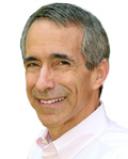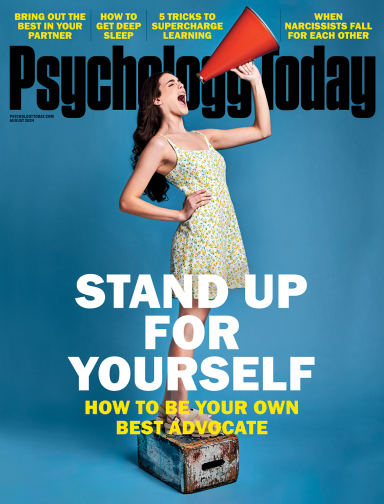
Fear
Fear and Loathing in the Waiting Room
Should your regular doctor visit regularly foster dread?
Posted June 7, 2012

Testing Your Health
Fear makes money. Fear and dread keep people coming back.
That’s how many people view their yearly trip to the doctor.
Many public health experts argue strongly against the annual "physical"—especially when people are young and feeling well. But for many the game will go on—even if many screening tests appear to do far more harm than good (see H. Gilbert Welch’s book “Ovediagnosis” to understand why.)
And the process begins way before you see the doctor.
Weeks before, a series of slips arrived in the mail. You are instructed to arrive at a strip mall storefront in the frosty early morning. There you will sign your name on a check board wait list.
And wait. You can flip through "People" magazine while you enjoy enforced hunger—your lab tests enjoin no food. Woe to you if you have unconsciously sipped coffee before contemplating your dark morning drive. Transgress and you will be sent back.
But your admission that you are responsibly starving allows the process to move forward. Next you’re greeted by a smiling technician, who beckons you to a low set chair. With your hands on your knees, your insurance will be checked. Woe to if your insurance company will not pay for those tests! If there is a problem, you might be told it would be great to get the companies or the doctor to answer their phones—but no one does at this hour.
So you are sent home like a school delinquent, hoping to untangle the bureaucracy and potentially restart the process—again.
But somehow you make it through that hurdle. Next you are handed a plastic cup, a “moist” alcohol impregnated towelette, and a series of unreadable sheets. A young woman straps you in a chair and drags a tourniquet across your arm. You try to tell jokes or talk about the hopeless local football team while she intently pokes your arm searching for the perfect vein.
The needle pops in. Blood flows into red tops and purple tops and green tops. The bandage applied, the woman points like an Old Testament prophet towards the back of the hallway.
Yes, that’s where the bathrooms are. Where you’re supposed to use that towelette.
You prepare. You undress. You look down. Now where am I supposed to stroke this thing?
But you have forgotten to pull off the plastic cup’s twisty top. In your hands lies the moist towelette and the cup. Can I pull the top off with just one hand?
You work diligently, but fumble. Have you destroyed the clean, sterile field? Will the test mean anything? What if it shows an infection you don’t have?
You are certainly not going back to ask for another cup. There’s been enough humiliation this morning.
And you think about money. How much can they charge for that stupid cup? If I ask for another, will the insurance pay for a second one? Will I get caught with an even bigger bill?
Finally your cup is ready. So are you. Except what does “midstream” mean, precisely? Is it really the middle? Or just the end of the process?
But for you there’s no beginning. You haven’t had coffee this morning. Nothing is coming out. You strain. Will the small amount you finally manage make for a worthwhile test?
Is this worth it? you ask yourself, as you leave your cup in the bathroom and rush to the car where a cold flask of coffee lies waiting, cradled with a sensibly sized piece of coffeecake and some Danish. As you bite into the coffeecake, an image of the test results floats into your mind.
You’ve got two weeks to wait to discover if you have cancer, or heart disease, or an occult infection—or perhaps something worse.
The Doctor’s Visit
You’ve successfully made it through the office staff, and find yourself lying nearly naked on top a waxy, crinkly sheet. The hard roll of the examining table hurts your back.. To your amazement the doctor and not the P.A. will see you that day.
She’s less excited to see you. Briefly she looks up from her tablet to say hello.
And quickly gets down to business. Your blood pressure is taken while she asks whether you’ve had any blinding headaches. “Breathe,” she says, as a piece of cold metal flies across your chest and back. You’re told to stop breathing as her right forefingers dig into your abdomen below the diaphragm. Fingers pass down your legs, checking pulses.
She frowns, and pulls up straight.
“Okay. Looks good. You can dress. ” And she’s out the door.
The frown on her face continues in her tiny office, with its photographs of innocently knowing children and large diplomas on the wall.
Your PSA is up. Your HDLs are down. Your glucose level is perilously close to abnormal.
You’ll have to go back for more tests. In three months.
Except the government has just awarded that PSA a grade of “D” and told everybody to stop using it to check for prostate cancer. For every person “saved” ; 30 to 100 people are treated unnecessarily.
Drug companies that managed to convince the FDA that treating “risk factors” was the same thing as treating disease have been caught believing their own ideology. They’ve spent tens of billions of dollars “treating” HDLs, only to find that increasing HDL levels does not treat heart disease—or prevent it. Instead, it appears to increase mortality.
And that’s because HDLs now look more a marker than a risk factor.
So your lower HDLs are not in your favor, but they’re just a small part of a bigger picture. As is your “pre-diabetic” condition.
Not eating that morning, driving through frozen streets, and waiting for the paperwork to pass really stressed you out. No wonder your fasting blood sugar was a little high.
There is another way.
Regeneration Medicine
Much of standard medical care is based on an outmoded model.
That model is your body as machine.
With age it wears down, just like a car. You fall apart.
Some parts you can replace. Hips, knees, we can do those. You’ll be laid up for months but they work pretty well.
Lungs, liver, brain—that’s a different story.
Regeneration medicine sees a different picture. You’re a living, thriving organism, that constantly restores, remakes and renews itself.
Fast. So fast that most of you—outside of skeletal elements like bone—is remade in weeks.
Or even faster. Most of your heart gets replaced inside three days.
And it’s never replaced or remade the same way. What you do is what you become. Give your body the right information and it rebuilds itself right.
Your doctor has been re-educated to regeneration and its potential. She’s suddenly interested in a lot more than your lab tests.
She gives you a different kind of questionnaire. It asks how you spend your time—what you do each day, hour by hour. Are you sitting much of time? Visiting friends? Walking to lunch? What are you eating, anyway? Is it a Danish or doughnut every morning? How much sleep do you get? How much do you think you need? How do you spend your time with your family?
And then your doctor asks you the regeneration question—what are you doing every hour and every day to regenerate your body?
Because if you know how to answer that question you can take control of your health. And you can aid the health of others. Human beings are profoundly social animals. Your family’s health—and that of your friends’—changes yours.
Instead of worrying about what cancers those lab tests might have missed you can think up cool ways to aid your well-being—your physical, mental, social, and spiritual being. Regeneration rules biology. Our bodies don’t break down when we get ill—they fail to regenerate right.
And we may control that process far more than most of us think. Lifespan is about lifestyle. Health is about feeling well.
Which means regenerating well—under your own direction.
And assessing your health yourself—without dread.



